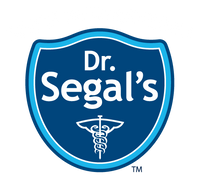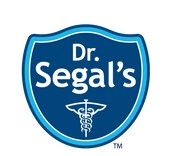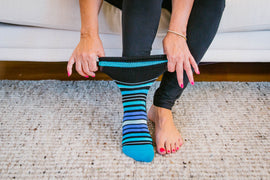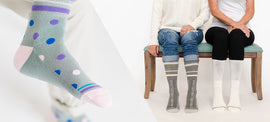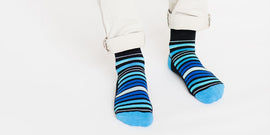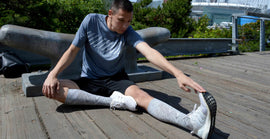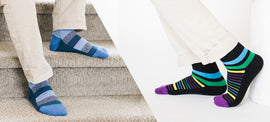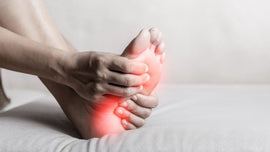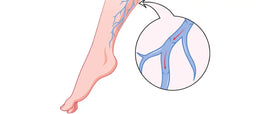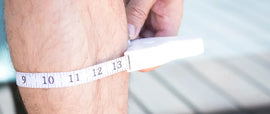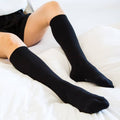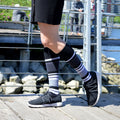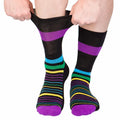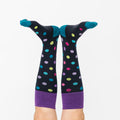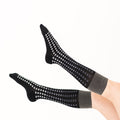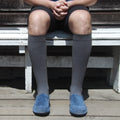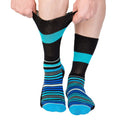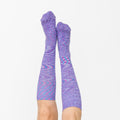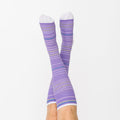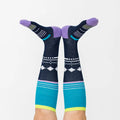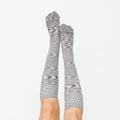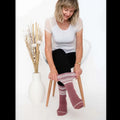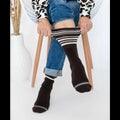Do you work a Desk Job? 3 Health Hazards Of Prolonged Sitting
Posted by HAYLIE SEGAL
Does your job require you to sit in the same place for extended periods of time?
Then you will want to know about some of the serious health risks associated with prolonged sitting, and how you can avoid the damaging effects simply by wearing compression socks. Sitting or standing for long periods of time results in the pooling of blood and fluid in your lower legs and feet. This lack of proper blood circulation will make your legs and feet feel tired, achy, and swollen and can lead to Venous Insufficiency, Peripheral Edema, and ultimately the most threatening risk, Deep Vein Thrombosis.
1. Venous Insufficiency:
Venous insufficiency is a condition which results when the veins of the lower leg cannot adequately return blood from the lower body to the heart. The blood flow in the veins is controlled by one way valves which often become damaged and are prone to leaking. When these valves leak it puts pressure on the vein walls and they become distended causing fluid to build up leading to swelling and varicose and spider veins. (Medline Plus, 2014) Wearing medical compression socks will enhance venous return, provide support for your legs and keep your legs healthy.
2. Peripheral Edema
Edema is observable swelling from fluid accumulation in body tissues. Edema most commonly occurs in the feet and legs, where it is referred to as ‘Peripheral Edema.’ (Cunha, 2014) Wearing medical compression socks or stockings will apply a gentle squeeze to the legs and feet, preventing blood from pooling and giving the veins support to return blood back up to the heart.
3. Deep Vein Thrombosis
Deep vein thrombosis (DVT) occurs when a blood clot (thrombus) forms in one or more of the deep veins in your body, usually in your legs. This is can be extremely life threatening as the blood clot can travel to your lung and cause a pulmonary embolism. (MayoClinic, 2014) People who are pregnant, on birth control, or smoke are especially at risk of developing a DVT and should strong consider wearing medical compression socks as part of their daily routine.
How Dr. Segal’s Compression Sock Technology Supports Good Desk Job Health.
The graduated pressure (tighter at the ankle and looser in the calf) provided by our compression socks help bring relief to tired, achy feet and legs by supporting the vein walls and enhancing blood flow. A knee high compression sock which goes over the calf muscle is necessary to be most effective. This gentle “squeeze” helps support the vein walls, allowing the valves to properly function, thus aiding the blood flow back toward the heart.
What Dr. Segal’s Compression Socks will do for your legs and feet:
– Increase leg energy
– Reduce swelling in the feet and ankles
– Reduce leg fatigue
– Reduce the incidence of blood clots
– Reduce the incidence of Varicose and Spider Veins
*It is important to check with your doctor to make sure that Medical Compression Socks are right for you.
Everyone can benefit from compression socks - for work, travel, pregnancy, and wherever life takes you! Dr. Segal’s compression sock design combines 20 years of medical experience with modern, trendy styles that you actually WANT to wear. They are extremely comfortable, are latex free and make your legs look and feel great.
Shop Compression Socks
Helpful Links:
“Sitting Is the New Smoking: Ways a Sedentary Lifestyle Is Killing You” by Huffington Post, Healthy Living Blog
“Desk jobs can be killers, literally” by Washington Post
“How to Prevent Leg Cramps while Sitting at Work” by Livestrong
“How to Prevent Leg Cramps When Sitting at Work” by eHow
References
Mayo Clinic. (2014, July 3). Deep vein thrombosis (DVT). Retrieved November 13, 2014, fromhttp://www.mayoclinic.org/diseases-conditions/deep-vein-thrombosis/basics/risk-factors/con-20031922
Cunha, DO, FACOEP, J. (2014, March 6). Edema: Causes and Pitting Edema and Other Types. Retrieved November 13, 2014, from http://www.medicinenet.com/edema/article.htm
MedlinePlus. (2014, May 27). Venous insufficiency: MedlinePlus Medical Encyclopedia. Retrieved November 17, 2014, from http://www.nlm.nih.gov/medlineplus/ency/article/000203.htm
TAGS:
SHARE:

